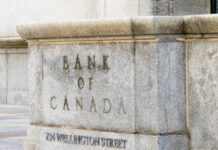Markets
Minutes of the December FOMC meeting were yesterday’s defining moment for trading, taking the shine off a stellar December ADP employment report (+807k vs +410k expected). The Fed at the end of last year lifted rate projections to three rate hikes this year, three hikes in 2023 and another two in 2024. This more aggressive stance is now accompanied by even more aggressive guidance that the rate lift-off could arrive “sooner or at a faster pace than participants had earlier anticipated.” This would imply that the start of the tightening cycle could match the projected end of net asset purchases in March. There is a strong conviction within the Fed that the inflation bar for raising rates has been met, with Minutes indicating that almost all participants had revised up their forecasts for inflation for 2022 notably and many did so for 2023 as well. Rising housing costs and rents, more widespread wage growth and more prolonged global supply bottlenecks “which could be exacerbated by the emergence of the Omicron variant”, prompted the changes. On top, general consensus is emerging that also the maximum employment goal is within reach. “Acknowledging that the maximum level of employment consistent with price stability may evolve over time, many participants saw the US economy making rapid progress toward the committee’s maximum-employment goal.” Several participants viewed labor market conditions even as already largely consistent with maximum employment. Apart from the hawkish interest rate guidance, Minutes also revealed that “participants judged that the appropriate timing of the balance sheet runoff would likely be closer to that of the policy rate lift off than in the committee’s previous experience.” Last time around, the Fed ended net asset purchases in October 2014 and kept the balance sheet stable for three years (almost two years after rate lift-off). Some participants now noted that it could be appropriate to begin to reduce the size of the balance sheet ($8.8tn) relatively soon after beginning to raise interest rates and that a significant amount of shrinkage could be appropriate over the normalization process. This formulation also suggest that balance sheet reduction serves as return to pre-pandemic settings and should be decoupled from an interest-rate tightening cycle to combat inflation.
US yields added 3.1 bps (30-yr) to 7.3 bps (5-yr) in a daily perspective, with the move continuing this morning. The US 2-yr yield set a new cycle high at 0.85% with a 25 bps March rate hike now largely discounted and becomes our preferred scenario. The US 10-yr yield took out the October top at 1.7% with the 2021 high of 1.77% being the next target. A significant surge in real rates (to -0.85%; highest since June) drives the move. We believe that a 2022 start of the balance sheet run-off is the most likely way to go. The jump in real yields scared equity investors with main US indices losing 1% (Dow) to 3.3% (Nasdaq). The US dollar gained intraday after the Minutes, but moves are very disappointing given the real yield pick-up. EUR/USD even closed at 1.1314 compared with an 1.1287 open.
News headlines
NBP governor Glapinski indicated that there is room for additional Polish rate hikes after this week’s 50 bps increase to 2.25%. The majority of the MPC sees few negative effects from raising the policy rate to 3%. However, if economic conditions continue to improve further there might be room to raise the policy rate to 4%. Glapinski also indicated to prefer a next step again to be 50 bps, but additional rate hikes might become less frequently. The zloty gained slightly before revering most intraday gains after the publication of hawkish Fed Minutes. EUR/PLN closed at 4.575.
The China December Services PMI recovered at a faster than expected pace, raising from 52.1 to 53.1. The composite PMI rose from 51.2 to 53.0, the highest reading since July 2021 and the fourth consecutive monthly rise. Output growth and total new orders both rose in December. Employment stabilized as a better performance in services was counterbalanced by a weaker performance in manufacturing. Gauges for prices eased. Given the soft development in the labour market, Caixin Senior economist Wang advocated policy makers to focus on shoring up employment and developing targeted support for small and midsize companies.












